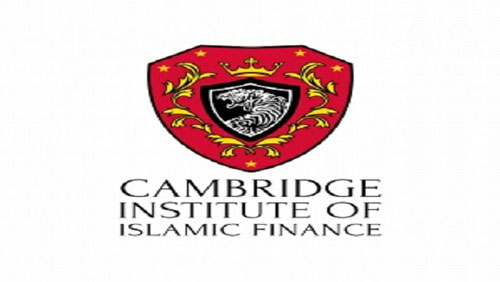London
Cambridge Institute of Islamic Finance (Cambridge-IIF) launched the 11th annual edition of the Global Islamic Finance Report (GIFR). The launch ceremony was held virtually in collaboration with Minhaj University Lahore (MUL) at its 4th World Islamic Economics and Finance Conference. MUL has, over the last three years served as Knowledge Partner for the report.
It was the second launch ceremony held, as the first one took place in the mid of January to announce the release of the most sought-after and comprehensive report in the Islamic banking and finance industry. The event was moderated by Dr Rizwan Malik, Senior Manager at Accounting and Auditing Organization for Islamic Financial Institutions (AAOIFI).
In this phased launch of the report, the second ceremony included presentations and keynote speeches by notable personalities of the industry and GIFR’s strategic partners and sponsors.
The DDCAPTM Group has been a long-standing strategic partner of GIFR as well as involved in numerous other initiatives aiming at promoting the industry. Mr Lawrence Oliver, Deputy CEO of DDCAPTM Group presented his thoughts on supporting the research-based initiatives of Cambridge Institute of Islamic Finance for quite some time, and look forward to doing so in the future as well.
The theme of this year’s GIFR revolves around Islamic social finance and the role technology can play in this, which aligns with DDCAPTM’s vision.
Dr Hussain Mohid-ud-Din Qadri, Deputy Chairman Board of Governors, Minhaj University, gave a brief presentation on the blended model of Islamic social finance to alleviate poverty, utilising zakat as a tool. He proposed a unique methodology for combining zakat with microfinancing that will enable zakat-takers to eventually become zakat-payers, and thus eliminate poverty from societies.
In his presentation, Dr Humayon Dar, Editor-in-Chief, highlighted five key facts about the global Islamic financial services industry. Firstly, the assets under management of Islamic banking and financial institutions around the world have attained the size of US$2.733 trillion. Secondly, while the Islamic financial assets continue to grow the rate at which this is happening has for the last six years been declining. Thirdly, the annual growth of the Islamic financial assets since the publication of the last edition of GIFR has been 5.5%. The average annual growth rate of the industry over the last 10 years is still significant, that is 11.7%. Fourthly, Islamic banking and finance remains at best a banking phenomenon, as 74% of the global Islamic financial assets are held by banks, both fully-fledged Islamic banks and the conventional banks offering Islamic banking services. Fifthly, there is a visible increase in the share of sukuk in the global Islamic financial AUM, from 15% in 2018 to around 17% according to the latest data.
The Top 10 countries ranked by IFCI are Malaysia, Indonesia, Iran, Saudi Arabia, Sudan, Pakistan, Brunei Darussalam, United Arab Emirates, Bangladesh and Kuwait. Malaysia has this year taken over from Indonesia that was ranked No. 1 in the 2019 IFCI rankings. Over the last 10 years, there have been some interesting stories taking shape with respect to IFCI. In 2011, Bangladesh was only a marginal country as per the IFCI rankings but over the past 10 years.—Zawya News










